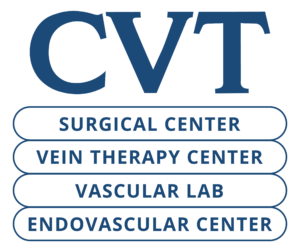In Louisiana, we’re known for our vibrant culture, delicious cuisine, and warm hospitality. Unfortunately, we’re also known for facing some serious health challenges – most notably, high rates of diabetes and obesity. These health issues have a close connection with another concerning condition called Peripheral Artery Disease (PAD). It’s essential to know the roles that each condition plays with the other so you can take charge of your health.
What is Peripheral Artery Disease (PAD)?
Peripheral Artery Disease (PAD) is a vascular condition that occurs when plaque builds up in the arteries of the extremities, most commonly in the legs. This plaque restricts blood flow, leading to leg pain, numbness, and cramping. In severe cases, PAD can lead to non-healing wounds, gangrene, and even amputations. Louisiana has some of the highest rates of PAD in the United States, and its connection to diabetes and obesity is undeniable.
How Diabetes and Obesity Can Lead to PAD
Diabetes and obesity are major risk factors for the development and progression of PAD. In Louisiana, more than one-third of adults are obese, and the state has consistently ranked high in diabetes prevalence. Any combination of these factors can create a perfect storm for PAD:
- Diabetes: People with diabetes are at increased risk of developing PAD because high blood sugar levels can damage blood vessels. This damage accelerates plaque build-up, further narrowing the arteries and increasing the risk of PAD. People with diabetes often have reduced blood flow to their extremities, which can lead to painful symptoms and slow healing of wounds.
- Obesity: Closely linked to the development of diabetes, obesity also contributes to PAD in its own right. Excess body fat, especially around the abdomen, can lead to inflammation and insulin resistance, increasing the risk of both diabetes and PAD. Obesity puts additional pressure on the cardiovascular system, making it harder for the heart to pump blood through narrowed arteries.
- Lifestyle Factors: The traditional Louisiana diet – rich in fried foods, sugary beverages, and high-calorie, low-nutrient meals – contributes to obesity and diabetes. Sedentary lifestyles, another common aspect in the state, exacerbate these issues.
Preventing and managing diabetes, along with leading a healthy lifestyle, can significantly reduce the incidence of PAD. It’s important to partake in physical activity regularly, eat a balanced diet, and avoid smoking, which is another risk factor for PAD. Early diagnosis and treatment of diabetes and PAD can help prevent the progression of these diseases and reduce the risk of complications as well. Addressing these health issues is essential for the well-being of individuals and the overall health of Louisiana as a state.
Peripheral Artery Disease (PAD) Treatment in Baton Rouge
At CVT Surgical Center, our practice is committed entirely to providing the most advanced treatment of vascular issues, including PAD. CVT Surgical Center has been a leader in managing vascular disorders since 1957. Drs. Mike Davis, Michael Conners, James McNeil, Gulrez Mahmood, and Matthew Abate are board-certified in treating peripheral vascular disease and offer state-of-the-art treatments.

